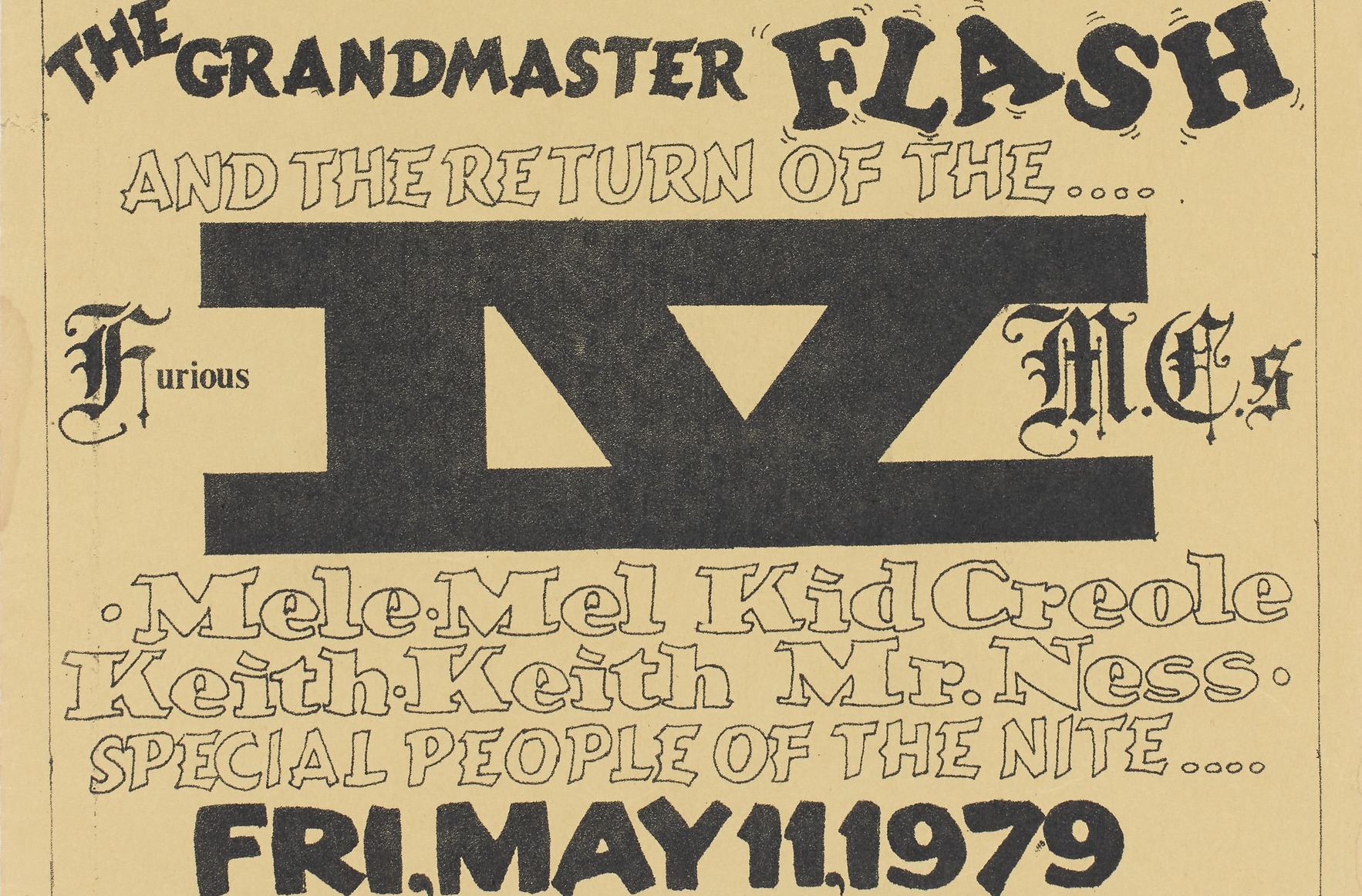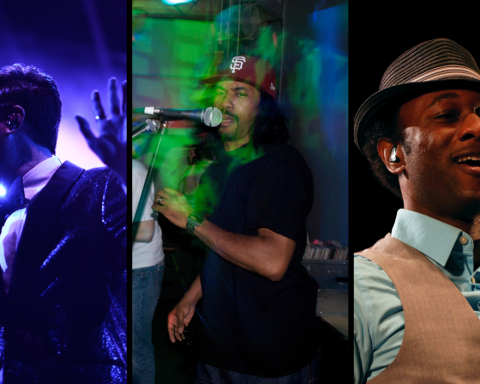Hip-hop was born at a nexus point in music history, and 1973-1979 was its foundation. The crunchy knock of soul drums, syncopated disco rhythms, and the controlled mayhem of rock guitars converged into a blend only two turntables and a microphone could achieve. From DJ Kool Herc’s “Back to School Jam” at 1520 Sedgwick Ave in the Bronx, NY, through hip-hop’s graduation to mainstream recognition with Sugarhill Gang’s “Rapper’s Delight,” we can trace the genre’s growth through the songs of the ’70s. Hip-hop was more an experience than a product in those days, with communal park jams outnumbering albums on shelves. ’70s hip-hop’s penchant for call-and-response and extended instrumental breaks provided the perfect soundtrack to a good time. Get transported back to that magical period with these ten songs as portals.
Playlist
Rapper’s Delight by The Sugarhill Gang (1979)
The early ’70s began with the embryonic development of hip-hop in the South Bronx. Yet the decade concluded with the genre bursting into mainstream America with a blast of unbridled jubilance: Sugarhill Gang’s 1979 hit “Rapper’s Delight.” It was the first hip-hop song to reach the Top 40 on the Billboard Hot 100 charts and a foundational inspiration for future hip-hop pioneers. Darryl ‘DMC’ McDaniels of RUN-DMC credits it as the first hip-hop song he remembers getting recorded outside the park jams. The track interpolates Chic’s “Good Times” bass line with feel-good lyrics about soggy macaroni and having “more clothes than Muhammad Ali.” These elements combine to make “Rapper’s Delight” a ’70s hip-hop staple.
Rappin’ and Rocking the House by Funky Four Plus One More (1979)
The 2020s female rap renaissance wouldn’t have occurred if Sha-Rock hadn’t cut through the male machismo of hip-hop. “‘I’m Sha-Rock, and I can’t be stopped. For all the fly guys, I’m gonna hit the top,” she declared on Funky Four Plus One More’s “Rappin And Rocking The House.” This was the first time a woman rapped on a track released to the public. The song is more than a historical footnote. Future revolutionaries like MC Lyte credit Sha’s blistering attack with etching a space in hip-hop for women to see themselves as MCs. The lyrical coordination between the five MCs and the call-and-response heart of the record is everything ’70s hip-hop was about.
Christmas Rappin‘ by Kurtis Blow (1979)
Hip-hop bulldozed its way into America’s ears and hearts by remixing how people saw life, including Christmas. 20-year-old Kurtis Blow, the first rapper signed to a major label, took aim at antiquated Yuletide tales and gave them a knee-slapping, toe-tapping update fit for decking the halls and having a ball. The ’70s were the precursor to hip-hop’s takeover, and Kurtis Blow’s masterful track was an emblem of that transition.
To the Beat Y’all by Lady B (1979)
Many ’70s rap songs had extended runtimes to fit a posse of MCs. Lady B tore through that convention with a nearly five-and-a-half-minute lyrical barrage containing less than 45 seconds without her rapping. “To The Beat Y’all” is an audio time capsule of the ’70s featuring references to Grease actor John Travolta and Charlie’s Angels actress Farrah Fawcett. Calling herself “the baddest politician since Watergate,” Lady B was playful without being a caricature. She transformed “Jack and Jill” from a nursery rhyme into a cautionary tale about birth control. Lady B may not get the respect she deserves, but she opened the door for all rappers to let their imaginations run wild.
King Tim III (Personality Jock) by The Fatback Band (1979)
Predating “Rapper’s Delight,” many considered The Fatback Band the beginning of recorded hip-hop. Although there are funk stylings and as much singing as rapping, the MC, Tim Washington, and his energetic dance floor orchestration were the main attraction. Call it what you want, “King Tim III (Personality Jock)” was a festival of sounds tailored for a ’70s hip-hop party.
Superrappin’ by Grandmaster Flash & The Furious Five (1979)
Grandmaster Flash & The Furious Five indelibly etched their names in the history books in the ’80s with “The Message.” Yet “Superrappin’” was how they burst on the scene. For 12 minutes and an eye-popping 18 verses, the group didn’t leave a single second free for rest. The influence of this record spans decades; its “can’t stop, won’t stop” interlude is repurposed on songs like Young Gunz’s 2003 release of the same name. Hip-hop can thank these six men from the South Bronx for coming together on an undeniable groove like “Superrapin’.“
Rap-O, Clap-O by Joe Bataan (1979)
The story of “Rap-O, Clap-O” and Joe Bataan is the story of hip-hop in the ’70s. Few believed in the then 37-year-old Latin soul singer’s 4 ½ minute track because it wasn’t what listeners were used to hearing. Yet, once Europe caught wind of it, they didn’t stop playing it. This success allowed Bataan to initiate a second career phase overseas with his first hip-hop track. We could argue that “Rap-O, Clap-O” is one of the first internationally recognized hip-hop tracks ever. Still, no one can disagree that it is inseparable from the legacy of ’70s hip-hop.
Looking Good’ (Shake Your Body) by Eddie Cheba (1979)
Hip-hop was a form of escapism from the harsh conditions many in the South Bronx faced during the ’70s. The party-focused records that dominated the day reflected that need for an escape. But songs like Eddie Cheba’s “Lookin’ Good (Shake Your Body)” hid the medicine in hip-shaking candy. The opening lines went, “Wall Street’s crying, while the dollar’s dying. And if taxes keep on going up, you won’t be able to shake your butt.” Eddie connected the dancefloor to the global stage without missing a beat, crafting one of hip-hop’s earliest socially conscious tracks.
Love Rap by Spoonie Gee (1979)
It’s surprising where a simple breakbeat can take an artist. Over congas and simmering drums, the self-proclaimed “Godfather of Rap” dished out a spellbinding storytelling rap about courting a woman with nothing but financial honesty and romantic prowess. Spoonie G introduced seduction on a rap record, and LL Cool J, Will Smith, and Queen Latifah have all sampled his work.
Rhymin‘ and Rappin‘ by Paulette & Tanya Winley (1979)
Little did two teenage sisters know that the rhymes they wrote in secret would lay the groundwork for groups like Salt-N-Peppa and City Girls. The sisters prematurely put themselves in the Hall of Fame and boasted about making grown men cry. This unapologetic confidence was seldom heard on wax from MCs twice their age. Tanya traces her lyrical journey—from getting handed a mic at birth to rapping until there wasn’t enough tape to record all her rhymes at ten. She goes through each age in some of the decade’s finest rapping. Paulette & Tanya Winley may not be as heralded as their contemporaries. But make no mistake, “Rhymin’ and Rappin’” set a precedent that became a movement.






